-
 Bitcoin
Bitcoin $107,323.9971
-0.42% -
 Ethereum
Ethereum $2,442.7415
-1.58% -
 Tether USDt
Tether USDt $1.0005
0.00% -
 XRP
XRP $2.0902
-4.49% -
 BNB
BNB $645.3561
-0.33% -
 Solana
Solana $140.8832
-2.81% -
 USDC
USDC $0.9999
0.01% -
 TRON
TRON $0.2713
0.17% -
 Dogecoin
Dogecoin $0.1611
-2.35% -
 Cardano
Cardano $0.5556
-2.75% -
 Hyperliquid
Hyperliquid $36.8045
-1.10% -
 Bitcoin Cash
Bitcoin Cash $494.4393
-1.23% -
 Sui
Sui $2.6406
-2.97% -
 Chainlink
Chainlink $13.0846
-1.74% -
 UNUS SED LEO
UNUS SED LEO $9.0127
0.09% -
 Avalanche
Avalanche $17.4023
-1.37% -
 Stellar
Stellar $0.2339
-3.25% -
 Toncoin
Toncoin $2.8330
-0.57% -
 Shiba Inu
Shiba Inu $0.0...01124
-3.38% -
 Litecoin
Litecoin $84.9229
-0.60% -
 Hedera
Hedera $0.1432
-3.84% -
 Monero
Monero $311.0740
-1.35% -
 Bitget Token
Bitget Token $4.6591
3.94% -
 Dai
Dai $1.0001
0.01% -
 Ethena USDe
Ethena USDe $1.0000
-0.01% -
 Polkadot
Polkadot $3.3033
-1.64% -
 Uniswap
Uniswap $6.9221
-4.55% -
 Pi
Pi $0.5546
-4.86% -
 Aave
Aave $257.5046
-1.30% -
 Pepe
Pepe $0.0...09215
-3.26%
Does the KDJ overbought zone blunting mean that the trend continues?
The KDJ overbought zone blunting suggests strong buying pressure in crypto, indicating the trend may continue despite traditional overbought signals.
Jun 27, 2025 at 03:35 pm
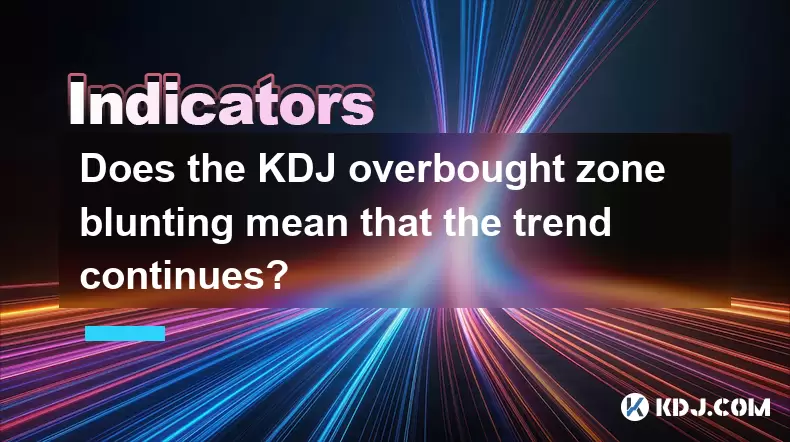
Understanding the KDJ Indicator in Cryptocurrency Trading
The KDJ indicator, also known as the stochastic oscillator, is a popular technical analysis tool used by traders to identify overbought or oversold conditions in asset prices. In the cryptocurrency market, where volatility is high and trends can change rapidly, understanding how to interpret the KDJ indicator becomes crucial for decision-making. The KDJ consists of three lines: the %K line (fast stochastic), the %D line (slow stochastic), and the %J line, which represents the divergence between %K and %D.
In crypto trading, when the %K line crosses above 80, it is generally considered to be in the overbought zone. Similarly, when it drops below 20, it's in the oversold zone. However, simply being in the overbought zone does not necessarily mean that a reversal is imminent. This leads us to the concept of KDJ overbought zone blunting, which refers to the situation where the indicator remains at extreme levels for an extended period without triggering a significant price reversal.
What Is KDJ Overbought Zone Blunting?
KDJ overbought zone blunting occurs when the %K line stays above the 80 threshold for a prolonged duration without showing signs of turning downward. Normally, traders expect a pullback or correction when an asset enters the overbought territory. However, in strong uptrends—especially in momentum-driven crypto markets—the indicator may remain elevated while the price continues to rise.
This phenomenon indicates that buying pressure is still dominant, and there is no immediate exhaustion of the bullish trend. Blunting is essentially a signal that the current trend may have more room to run, even though traditional overbought readings suggest caution. It's important to note that this behavior is not unique to cryptocurrencies but is more pronounced due to the speculative nature and high volatility of digital assets.
How to Identify KDJ Overbought Zone Blunting on Charts
To spot KDJ overbought zone blunting, follow these steps:
- Open a candlestick chart on your preferred crypto trading platform.
- Apply the KDJ indicator with default settings (usually 9-period lookback).
- Observe if the %K line remains above 80 for several candles.
- Check whether the price continues to move upward despite the overbought reading.
When you notice that the %K line hovers near or slightly above 80, and the price keeps climbing, you are witnessing overbought zone blunting. This is often seen during strong rallies in major cryptocurrencies like Bitcoin (BTC) or Ethereum (ETH). Traders who rely solely on overbought signals might miss out on further gains if they prematurely exit their positions.
Why Does Blunting Happen in Crypto Markets?
Several factors contribute to KDJ overbought zone blunting in the cryptocurrency space:
- Strong Market Sentiment: Positive news, institutional adoption, or macroeconomic factors can drive sustained buying pressure.
- Low Liquidity in Altcoins: Some altcoins experience rapid price surges due to low float supply or pump-and-dump activities, causing indicators to stay overbought.
- Algorithmic Trading: High-frequency trading bots can push prices higher without allowing time for technical indicators to reset.
- Market Manipulation: Whales or large investors may accumulate coins aggressively, distorting normal technical patterns.
These elements create scenarios where traditional technical signals become less reliable. Hence, traders should not automatically assume a reversal just because the KDJ enters the overbought zone. Instead, they should look for additional confirmation from volume, candlestick patterns, or other complementary indicators like Moving Averages or RSI.
Strategies for Trading During KDJ Overbought Zone Blunting
If you observe KDJ overbought zone blunting, here are some strategies you can consider:
- Ride the Trend: If the price continues to rise and volume supports the move, holding or adding to long positions could be viable.
- Use Trailing Stops: Protect profits by using trailing stop-loss orders instead of fixed take-profit levels.
- Monitor Divergence: Watch for bearish divergence between the KDJ and price action. If the price makes new highs but the KDJ fails to do so, a reversal might be approaching.
- Combine with Other Indicators: Use tools like MACD or Bollinger Bands to confirm trend strength and potential exhaustion points.
- Avoid Shorting Prematurely: Selling short based only on overbought readings can be risky in crypto markets unless supported by strong bearish signals.
It’s also essential to understand that KDJ overbought zone blunting doesn't guarantee continuation; rather, it suggests that the trend has not yet shown signs of reversing.
Frequently Asked Questions
Q1: Can KDJ overbought zone blunting occur in downtrends?
Yes, although it's less common. In a strong downtrend, the KDJ can enter the oversold zone and stay there for extended periods. This is referred to as oversold zone blunting and reflects continued selling pressure.
Q2: How reliable is the KDJ indicator in cryptocurrency trading?
The KDJ indicator is useful but not foolproof. It works best when combined with other tools such as volume analysis, support/resistance levels, and broader market sentiment. Relying solely on KDJ can lead to false signals in highly volatile crypto markets.
Q3: What timeframes are best for observing KDJ overbought zone blunting?
Higher timeframes like 4-hour or daily charts provide more reliable signals for identifying KDJ overbought zone blunting. Shorter timeframes (e.g., 5-minute or 15-minute) tend to generate more noise and false signals.
Q4: Should I close my position if KDJ enters the overbought zone?
Not necessarily. If the trend remains intact and there's no sign of reversal (like bearish candlesticks or divergences), it may be better to hold or trail your stop loss. Closing too early can cause you to miss further gains during strong moves.
Disclaimer:info@kdj.com
The information provided is not trading advice. kdj.com does not assume any responsibility for any investments made based on the information provided in this article. Cryptocurrencies are highly volatile and it is highly recommended that you invest with caution after thorough research!
If you believe that the content used on this website infringes your copyright, please contact us immediately (info@kdj.com) and we will delete it promptly.
- Crypto Picks: Avalanche and Morpho Make Grayscale's Top 20, Leaving Optimism Behind!
- 2025-06-27 20:30:12
- NodeOps, Token Generation, and Binance Wallet: A Deep Dive into Binance's Evolving Ecosystem
- 2025-06-27 20:50:12
- Bitcoin, Memecoins, and Returns: A Wild Ride Through Crypto Town
- 2025-06-27 20:30:12
- Cryptocurrencies Under $1: Unveiling Hidden Growth Potential in 2025
- 2025-06-27 21:15:12
- Degen Lab: The AI Meme Coin Factory Revolutionizing Public Presales
- 2025-06-27 20:55:12
- Meme Coins, Long Term, and Presales: What's the Buzz?
- 2025-06-27 20:56:57
Related knowledge
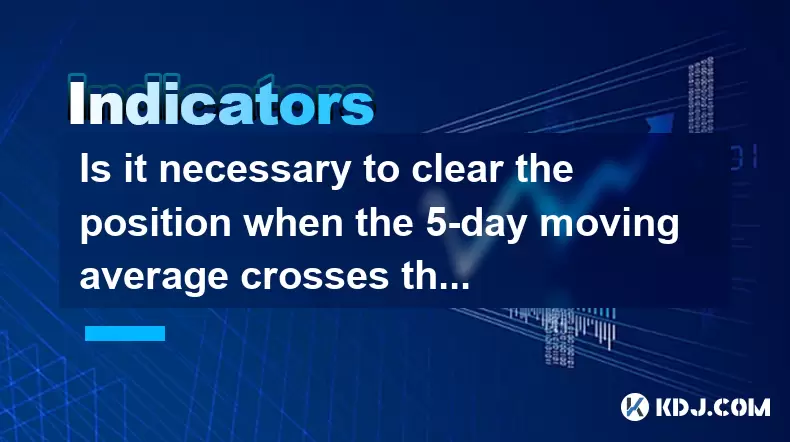
Is it necessary to clear the position when the 5-day moving average crosses the 10-day moving average?
Jun 27,2025 at 07:21pm
Understanding the 5-Day and 10-Day Moving AveragesIn the realm of technical analysis within the cryptocurrency market, moving averages play a crucial role in identifying trends and potential reversal points. The 5-day moving average (MA) and 10-day moving average are two of the most commonly used short-term indicators by traders. These tools smooth out ...

Does the KDJ overbought zone blunting mean that the trend continues?
Jun 27,2025 at 03:35pm
Understanding the KDJ Indicator in Cryptocurrency TradingThe KDJ indicator, also known as the stochastic oscillator, is a popular technical analysis tool used by traders to identify overbought or oversold conditions in asset prices. In the cryptocurrency market, where volatility is high and trends can change rapidly, understanding how to interpret the K...
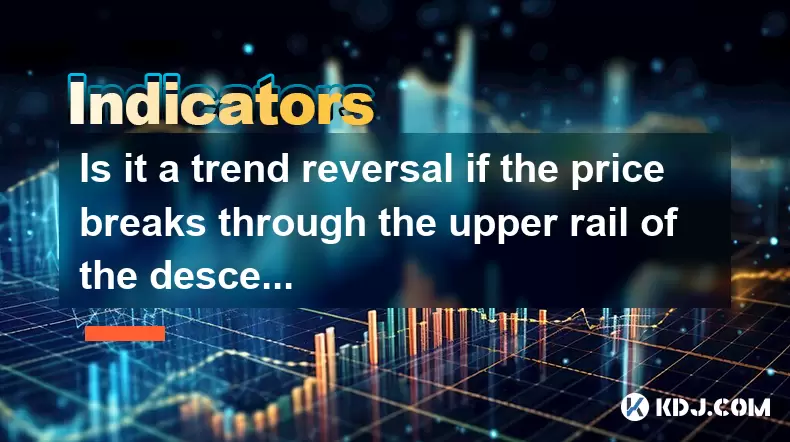
Is it a trend reversal if the price breaks through the upper rail of the descending channel and then steps back without breaking?
Jun 27,2025 at 05:35pm
Understanding the Descending Channel PatternA descending channel is a technical analysis pattern formed by two parallel downward-sloping trendlines, one acting as resistance and the other as support. This pattern typically indicates a continuation of a downtrend, where price action oscillates between these two boundaries. Traders often look for breakout...
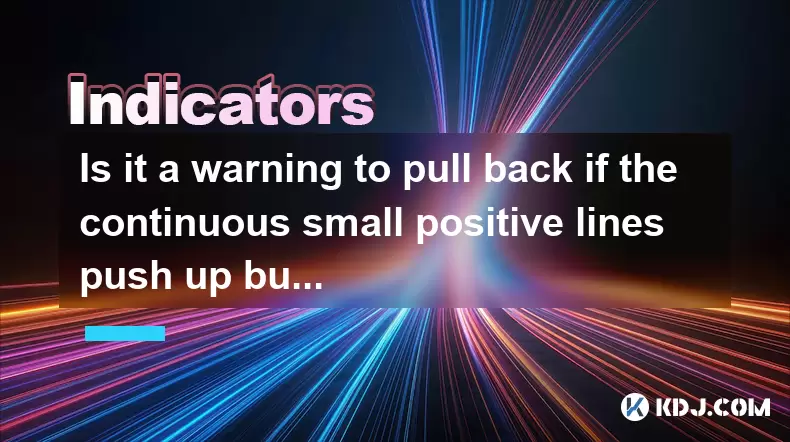
Is it a warning to pull back if the continuous small positive lines push up but the volume is insufficient?
Jun 27,2025 at 05:28pm
Understanding the Pattern: Continuous Small Positive LinesIn technical analysis, continuous small positive lines refer to a series of candlesticks where each candle closes slightly higher than its open. These candles usually have short wicks and indicate a gradual upward movement in price. Traders often interpret this pattern as a sign of steady buying ...
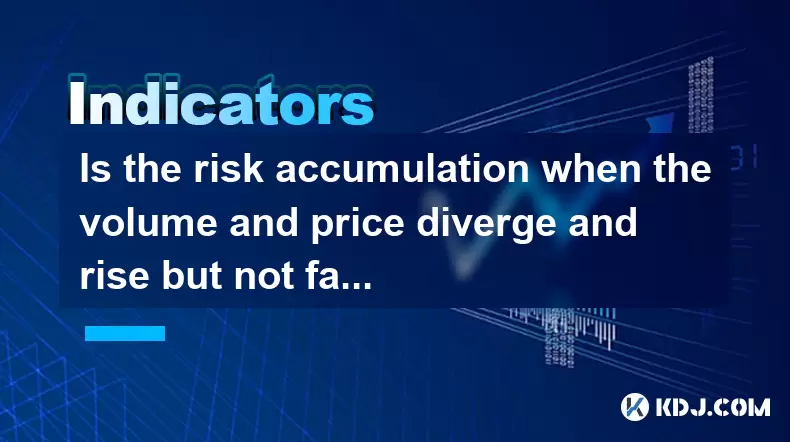
Is the risk accumulation when the volume and price diverge and rise but not fall?
Jun 27,2025 at 04:28pm
Understanding Volume and Price Divergence in Cryptocurrency TradingIn cryptocurrency trading, the relationship between volume and price plays a critical role in identifying market sentiment. When volume increases while price rises, it typically signals strong buying pressure and healthy market participation. However, when this correlation breaks—especia...
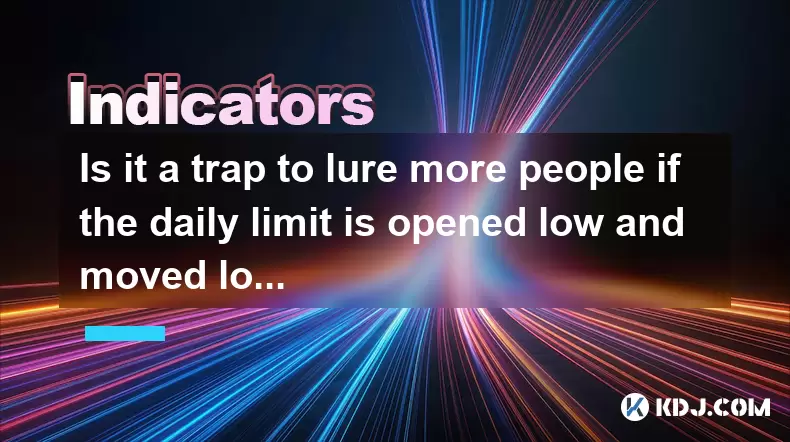
Is it a trap to lure more people if the daily limit is opened low and moved low the next day?
Jun 27,2025 at 08:21pm
Understanding the Mechanics of Daily Limits in Cryptocurrency TradingIn cryptocurrency trading, daily limits refer to the maximum percentage by which a digital asset’s price can rise or fall within a 24-hour period. These limits are often implemented by exchanges to prevent extreme volatility and protect traders from sudden, drastic losses. When a coin ...

Is it necessary to clear the position when the 5-day moving average crosses the 10-day moving average?
Jun 27,2025 at 07:21pm
Understanding the 5-Day and 10-Day Moving AveragesIn the realm of technical analysis within the cryptocurrency market, moving averages play a crucial role in identifying trends and potential reversal points. The 5-day moving average (MA) and 10-day moving average are two of the most commonly used short-term indicators by traders. These tools smooth out ...

Does the KDJ overbought zone blunting mean that the trend continues?
Jun 27,2025 at 03:35pm
Understanding the KDJ Indicator in Cryptocurrency TradingThe KDJ indicator, also known as the stochastic oscillator, is a popular technical analysis tool used by traders to identify overbought or oversold conditions in asset prices. In the cryptocurrency market, where volatility is high and trends can change rapidly, understanding how to interpret the K...

Is it a trend reversal if the price breaks through the upper rail of the descending channel and then steps back without breaking?
Jun 27,2025 at 05:35pm
Understanding the Descending Channel PatternA descending channel is a technical analysis pattern formed by two parallel downward-sloping trendlines, one acting as resistance and the other as support. This pattern typically indicates a continuation of a downtrend, where price action oscillates between these two boundaries. Traders often look for breakout...

Is it a warning to pull back if the continuous small positive lines push up but the volume is insufficient?
Jun 27,2025 at 05:28pm
Understanding the Pattern: Continuous Small Positive LinesIn technical analysis, continuous small positive lines refer to a series of candlesticks where each candle closes slightly higher than its open. These candles usually have short wicks and indicate a gradual upward movement in price. Traders often interpret this pattern as a sign of steady buying ...

Is the risk accumulation when the volume and price diverge and rise but not fall?
Jun 27,2025 at 04:28pm
Understanding Volume and Price Divergence in Cryptocurrency TradingIn cryptocurrency trading, the relationship between volume and price plays a critical role in identifying market sentiment. When volume increases while price rises, it typically signals strong buying pressure and healthy market participation. However, when this correlation breaks—especia...

Is it a trap to lure more people if the daily limit is opened low and moved low the next day?
Jun 27,2025 at 08:21pm
Understanding the Mechanics of Daily Limits in Cryptocurrency TradingIn cryptocurrency trading, daily limits refer to the maximum percentage by which a digital asset’s price can rise or fall within a 24-hour period. These limits are often implemented by exchanges to prevent extreme volatility and protect traders from sudden, drastic losses. When a coin ...
See all articles























































































